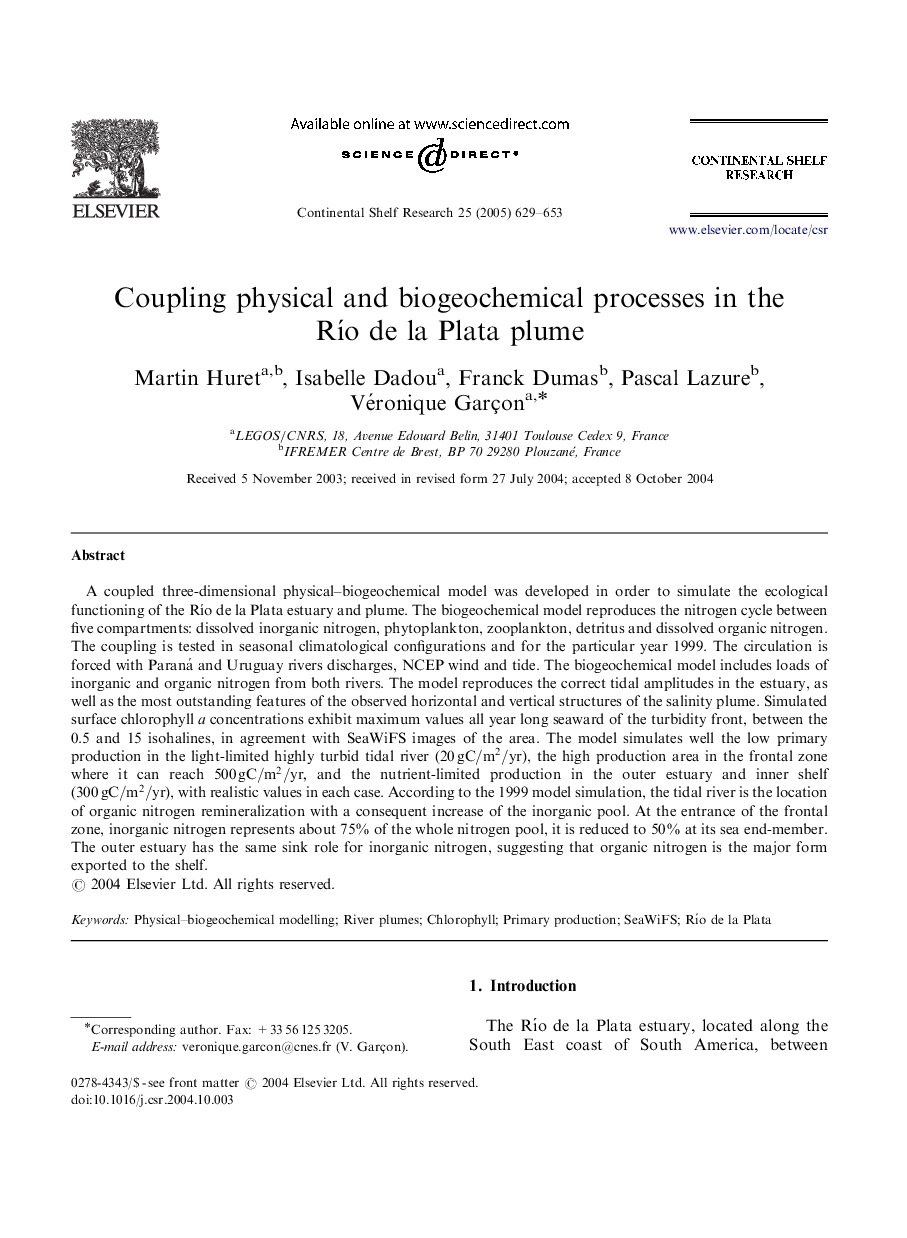| Article ID | Journal | Published Year | Pages | File Type |
|---|---|---|---|---|
| 9479180 | Continental Shelf Research | 2005 | 25 Pages |
Abstract
A coupled three-dimensional physical-biogeochemical model was developed in order to simulate the ecological functioning of the RÃo de la Plata estuary and plume. The biogeochemical model reproduces the nitrogen cycle between five compartments: dissolved inorganic nitrogen, phytoplankton, zooplankton, detritus and dissolved organic nitrogen. The coupling is tested in seasonal climatological configurations and for the particular year 1999. The circulation is forced with Paraná and Uruguay rivers discharges, NCEP wind and tide. The biogeochemical model includes loads of inorganic and organic nitrogen from both rivers. The model reproduces the correct tidal amplitudes in the estuary, as well as the most outstanding features of the observed horizontal and vertical structures of the salinity plume. Simulated surface chlorophyll a concentrations exhibit maximum values all year long seaward of the turbidity front, between the 0.5 and 15 isohalines, in agreement with SeaWiFS images of the area. The model simulates well the low primary production in the light-limited highly turbid tidal river (20gC/m2/yr), the high production area in the frontal zone where it can reach 500gC/m2/yr, and the nutrient-limited production in the outer estuary and inner shelf (300gC/m2/yr), with realistic values in each case. According to the 1999 model simulation, the tidal river is the location of organic nitrogen remineralization with a consequent increase of the inorganic pool. At the entrance of the frontal zone, inorganic nitrogen represents about 75% of the whole nitrogen pool, it is reduced to 50% at its sea end-member. The outer estuary has the same sink role for inorganic nitrogen, suggesting that organic nitrogen is the major form exported to the shelf.
Related Topics
Physical Sciences and Engineering
Earth and Planetary Sciences
Geology
Authors
Martin Huret, Isabelle Dadou, Franck Dumas, Pascal Lazure, Véronique Garçon,
